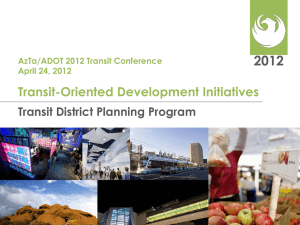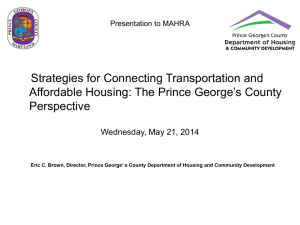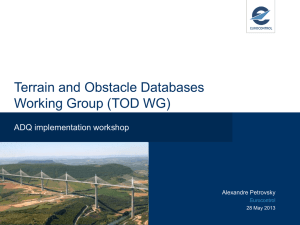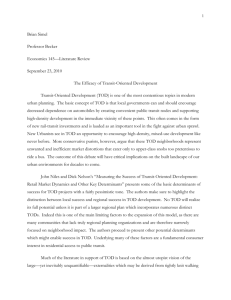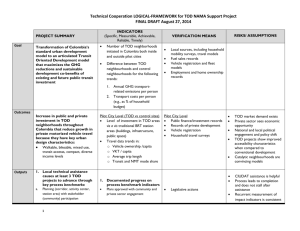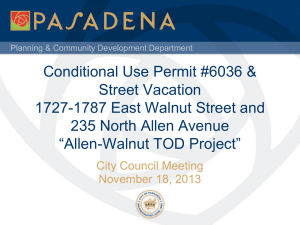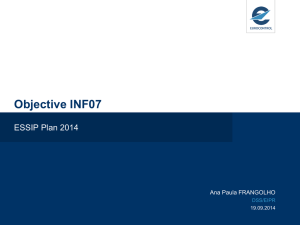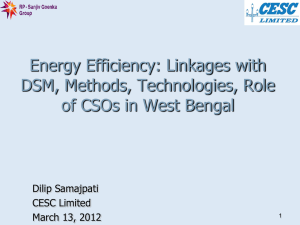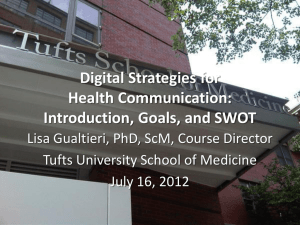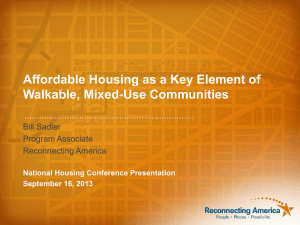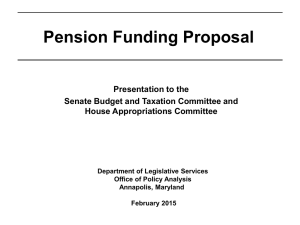presentation - Corridors of Opportunity
advertisement
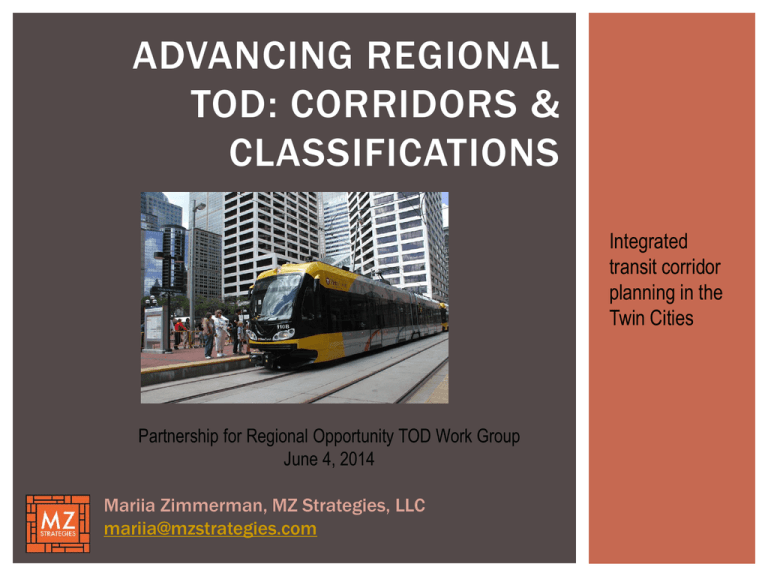
ADVANCING REGIONAL TOD: CORRIDORS & CLASSIFICATIONS Integrated transit corridor planning in the Twin Cities Partnership for Regional Opportunity TOD Work Group June 4, 2014 Mariia Zimmerman, MZ Strategies, LLC mariia@mzstrategies.com SHARE NEW TOOLS WITH YOU TODAY TOD and Transitway Corridor Planning Best Practices Developed May 2014 by MZ Strategies, LLC based upon Corridor of Opportunities, Hiawatha and Northstar planning efforts, interviews, and research TOD Classification Tool Developed December 2013 by Reconnecting America (now part of NRDC’s Urban Solutions Team) through McKnight Foundation grant, in coordination with Met Council TOD Office and local advisory group “SHAPING THE NEXT 15 YEARS OF TOD CORRIDOR PLANNING” Advancing TOD through Transitway Corridor Planning A resource document for Met Council TOD Office and PRO-TOD partners to engage project engineers, planners, elected officials and community engagement groups TOD and Transitway Corridor Planning Elements: Who leads/partners on different elements What are the phases of project development What are shared TOD and transitway goals for public engagement, market analysis, infrastructure needs, and development How to coordinate on activities, outreach and decision -making PLANNING FOR TOD OCCURS AT MANY SCALES Region Design & Construct on-time, on-budget high quality transit project that meets regional transit system needs; and Collaborate to achieve transit supportive development Corridor Distinguish types and function Desire for catalytic investments Station Area Support placemaking, “last mile connections,” & neighborhood and/or community benefits Land Parcel Maximize development and redevelopment site potential Source: Flessig & Carlton, 2014 TRANSITWAY DEVELOPMENT PROCESS WHO HAS A SEAT AT THE TABLE Lead/partner agencies and jurisdictions defined by who brings $ to table who influences land use decisions who makes transportation engineering decisions Collaboration is key! REGIONAL BEST PRACTICES 1. 2. 3. 4. The importance of corridor level partnerships Corridor context impacts TOD potential Creative methods needed to tackle challenges implicit in TOD Community Engagement must be coordinated and continuous TOD CLASSIFICATION TOOL • Goals: – – – – Prioritize and inform public and private investment in TOD Coordinate actors making regional and station area investments Inform local community strategies Input to more detailed market assessment work • Objectives: – Differentiate TOD areas based on quantitative factors – Provide a measure of TOD readiness – Create a shared understanding of prioritization needs ADVISORY GROUP MEMBERS (2013 – 2014) Roles Provide input on approach, development of Prioritization Tool, TOD investments Consider how to apply the Prioritization Tool within respective organizations Brief leadership and partners on the Prioritization Tool Members GreaterMSP, ULI, the Met Council, Hennepin County, Minnesota Housing, DEED, local jurisdictions and the McKnight Foundation Developed by Reconnecting America through a grant from the McKnight Foundation METHODOLOGY Identify station areas Score station areas on nine different metrics Transit-Orientation Market Potential Overlays for Economic Development and Equity – Location of significant job centers – Fair Housing and Equity Assessment (FHEA) analysis identified areas of racially concentrated areas poverty and opportunity Add metrics to calculate composite scores TOD CLASSIFICATION T YPES Different opportunities and support needed in different station areas; all have TOD potential Catalyze Transition Plan and Partner Raise the Bar Connect Local Connections and Planning Support Critical TOD Classifications: Twin Cities Transitway Station Types Existing LRT TOD Classification Types TRANSITION: SOUTHWEST STATION Transit-Orientation • • Market Potential • Implementation Priorities – Implement preliminary station area planning – Planning and visioning where necessary Overlays – Economic: Engage in detailed planning, form public/private partnerships – Equity: Engagement with traditionally under-represented communities Examples of Programs – Station Area Planning – Met Council and Local Jurisdiction Comprehensive Planning CATALYZE: WESTERN AVE STATION Transit-Orientation • • Market Potential • Implementation Priorities – Catalytic development projects – Placemaking investments a priority Overlays – Economic: Major employers can be private catalytic force, transit-oriented facilities – Equity: Mixed-income housing, affordable housing can act as catalyst Examples of Programs – Metropolitan Council’s TOD Office Activities – Met Council’s LCA TOD Grant Program – Minnesota Housing loans and grants – DEED’s Redevelopment grants POTENTIAL APPLICATIONS • Provide a unified way of talking about the system and how station areas differ. • Align multiple stakeholder interests in stations or sites near stations. • Add transit orientation into conversations about site selection, market potential into conversations about transit and transportation investments. • Help guide county and city Capital Improvement Plans (CIP) • Use in applications or consider as criteria or bonus points for grant programs PANEL Julie Farnham Lucy Thompson Senior Planner City of Bloomington Principal City Planner City of Saint Paul Charles Carlson Katie Walker Senior Manager, BRT/Small Starts Projects Metro Transit Southwest Community Works Manager Hennepin County PANEL QUESTIONS • Potential uses and value of the TOD Classification Tool? • What are possible audiences and opportunities for using the Corridor Planning Report? • How can our region best address local planning and last mile needs? • What other kinds of tools do we need in this region that Metro Transit TOD Office could provide?
